Simon Keller has been playing the alphorn for seven years. During this time, he happened to come across a picture of an Alpine sax on the Internet and was immediately fascinated. Soon he set about building his own instrument. He drew plans, a colleague helped him program the CNC files, and Roland Zahner milled the blanks. As a trained toolmaker, Simon took over the finish. After 120 hours of work, Model 1.0 was ready. Disillusionment followed: the instrument did not intonate properly – a “buck,” as he says. It would probably have been the end of his alphorn making career had a friend not commissioned him to make an improved version. So Simon went over the plans again, especially adjusting the connecting bend, which had previously been cylindrical because of the bushings. And lo and behold: Model 2.0 inspired.
Now Simon is trying to build up a second mainstay with the production of the Alpensax – today he still has a 100% job in a spare parts warehouse. He has already experienced that it takes staying power to establish his “Suissewood” brand in the market. Financially, too, it’s an adventure: costs for machinery and raw materials, suppliers for bushings and bags, rental costs for the workshop. To be able to produce efficiently, he relies on his circle of acquaintances. Central remains the alphorn maker Roland Zahner, with whom he also plays regularly in the formation Oklahoma Alphorn. Another friend mills the blanks with a Kuka industrial robot. This leaves Simon with about 60-65 hours of his own work time per instrument. When I visited in January 2023, he had completed (and sold) construction number 9.
Visually, the Alpensax look cheeky and cool. Unlike an alpophone with its two (long) partial tubes, the Suissewood instrument has four relatively short partial tubes and is thus about the same size as a baritone saxophone. Simon was guided by his aesthetic sensibilities when dividing the tube lengths, with the first bow being interchangeable between F and F# tuning via gold-anodized bushings. With a wall thickness of 7mm, the Alpensax weighs 3kg and can thus be played with or without a riser. Cups and tubes are made of spruce wood, which Simon sources from Roland Zahner. Barrel, ring and bows he makes from walnut. The design of the barrel is similar to that of Zahner. All parts are treated inside and outside with a 2-component varnish. The workmanship is impeccable.
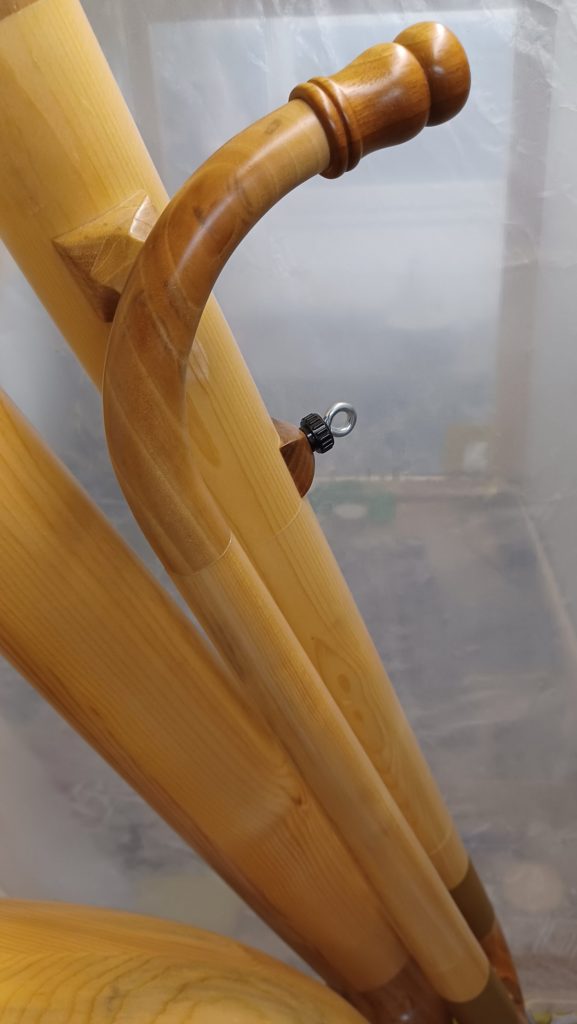
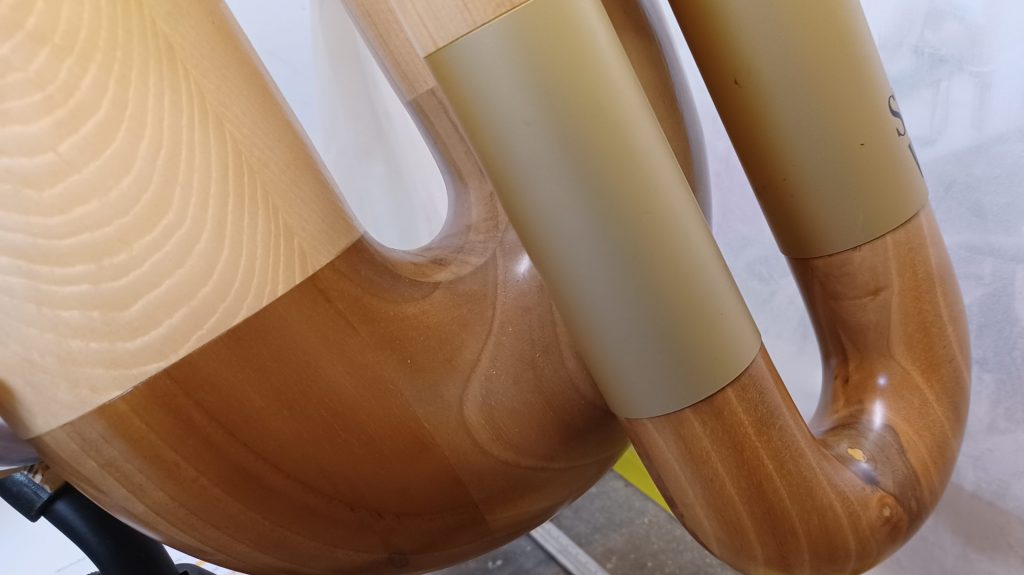
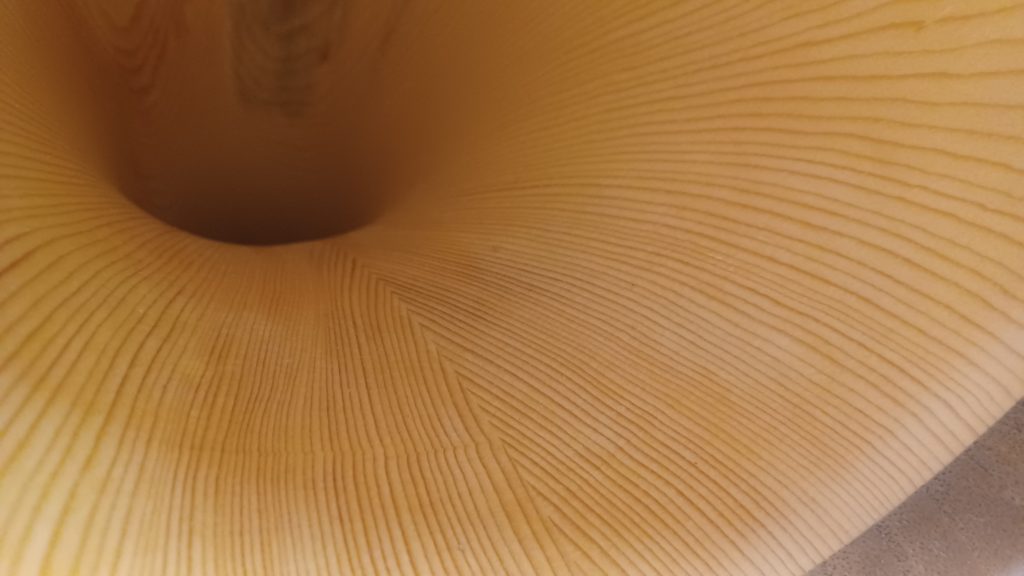
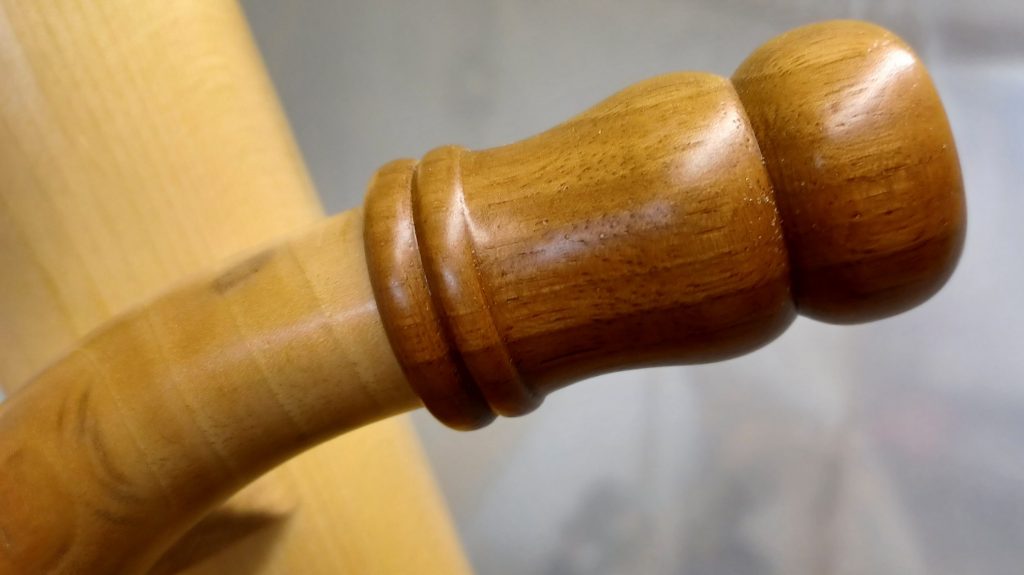
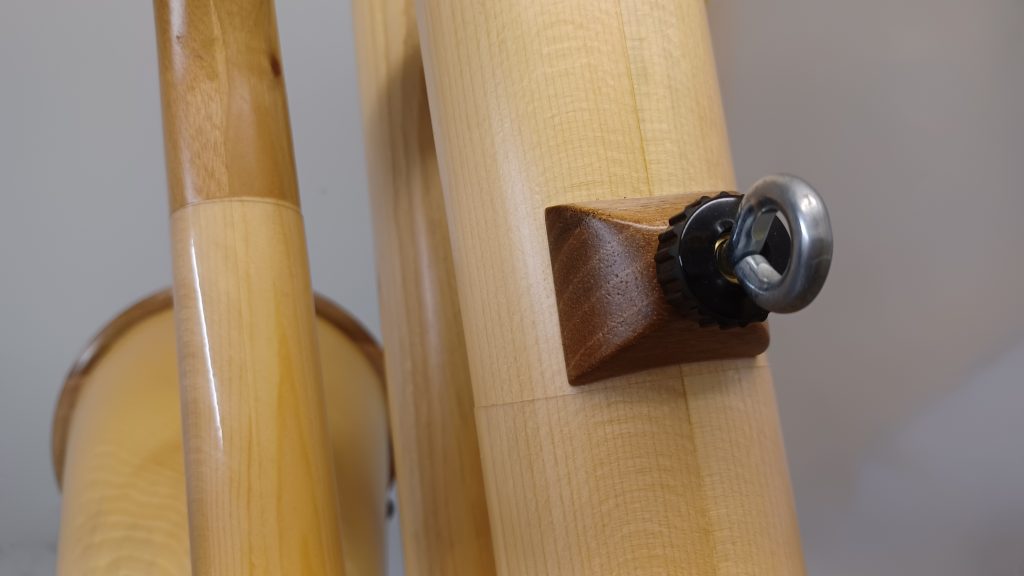
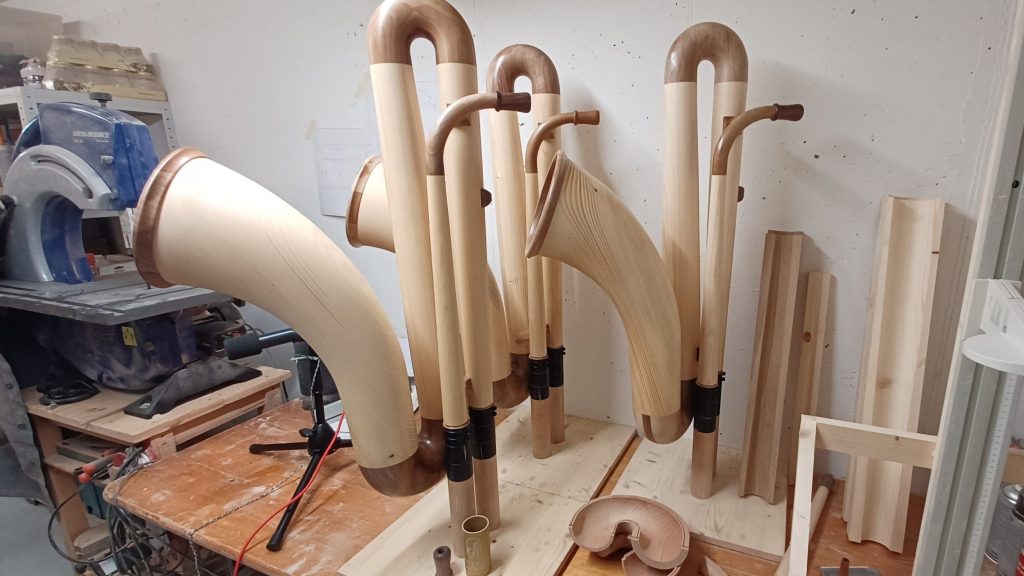
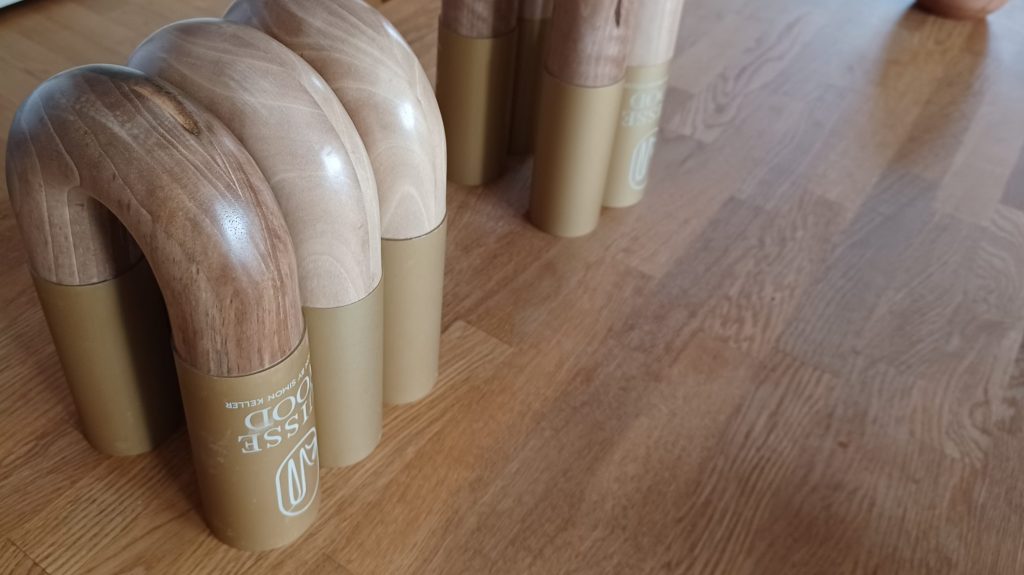
At the test match I felt forty years younger – I played the saxophone for a few years in my youth. The ability to move while playing gives a new feel to the game. It just invites you to blow snotty and rolly. As with a saxophone, you hold the instrument on the right side of the second section tube and with your left hand about 30cm from the mouthpiece; if you normally clamp your horn high up and press it against your lips, you may struggle with the stability of the embouchure. Due to the proximity to the cup, you also hear very direct and honest feedback from the instrument. I liked the sound of the Alpensax very much. Especially the lower registers develop a full volume and rich overtones. The notes respond well and the instrument allows for agile playing. Thanks to the slightly increased counterpressure, the dynamics can be selectively dosed. Compromises are unavoidable in intonation due to the windings. However, with a check on the tuner, I was able to intonate all notes cleanly without too much correction effort, except for the somewhat low c1. Simon tunes his instruments to a1=440Hz.
An Alpensax at Suissewood including bag, F and F# bow and retaining strap costs 4’908 CHF. Simon is thus targeting a customer segment away from the traditionalists. The majority of his customers to date are women; of the last 3 series, two instruments are going to well-known alphorn players in the USA.
Conclusion: A young savage in the alphorn maker scene who wants to conquer a niche in the market with an unconventional concept. Especially for alphorn teachers (distance) and stage musicians (space) a very interesting alternative.
Here are a few more impressions:
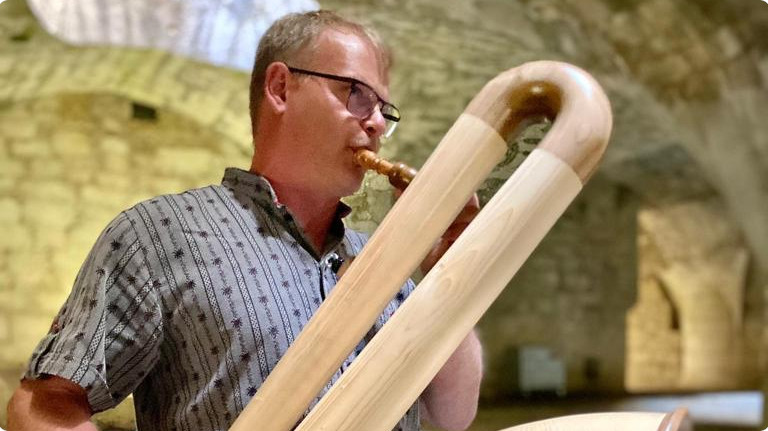
Leave a Reply